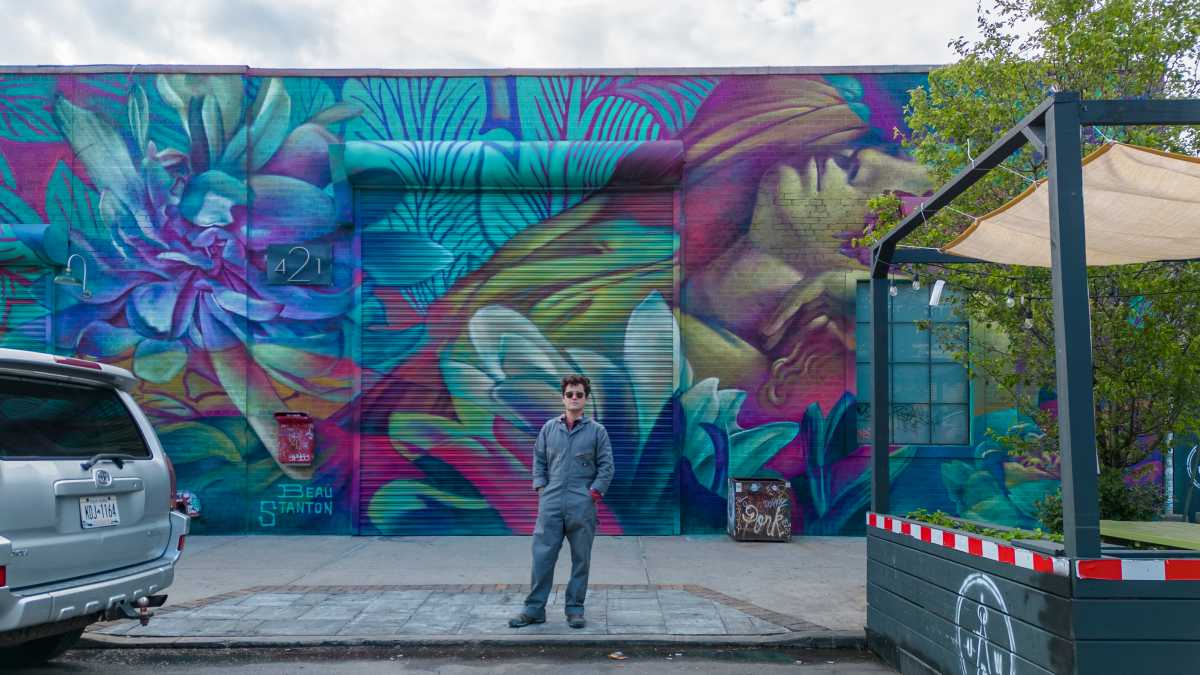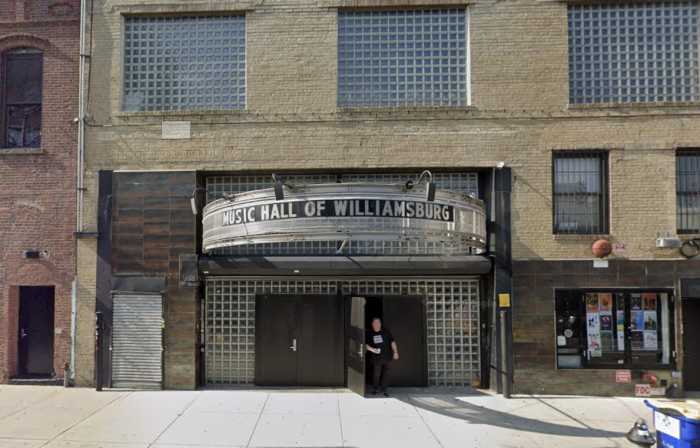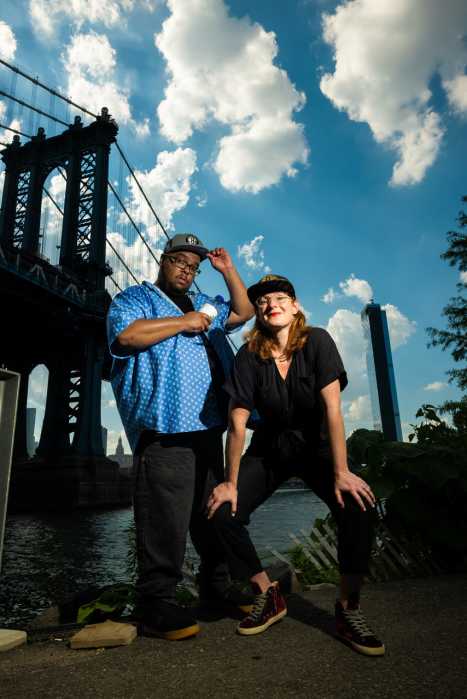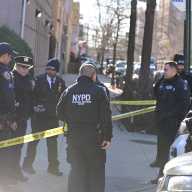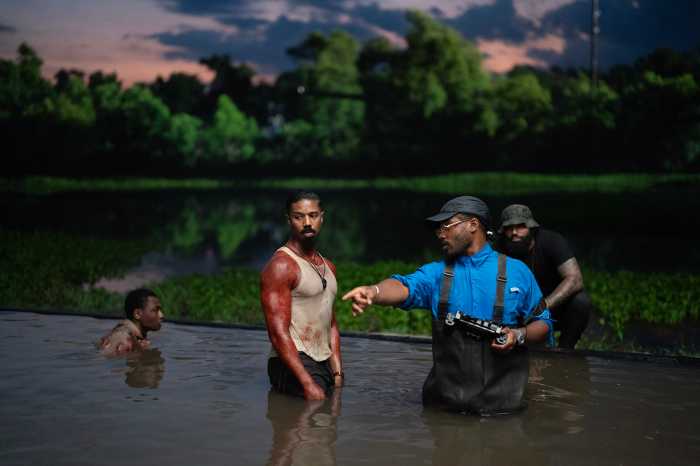New York City is filled with art galleries and museums, beckoning visitors in to check out their paintings and exhibits. But Red Hook resident Beau Stanton uses the city as his canvas to bring his art to the public.
In Bushwick, Stanton — a kind of modern Michelangelo, or at least a painter who specializes in realistic, imaginative murals — painted a pair of murals, “Ariadne and the Flowers” and “Flower Boy” on a 150-foot-long, 15-foot-tall wall. The work is so big, he said, that he used a drone to get good images.
Located at 421 Troutman St., the piece was commissioned by Quebracho, a custom framing company surrounded by cafes, bars, clubs, restaurants and other nightlife.
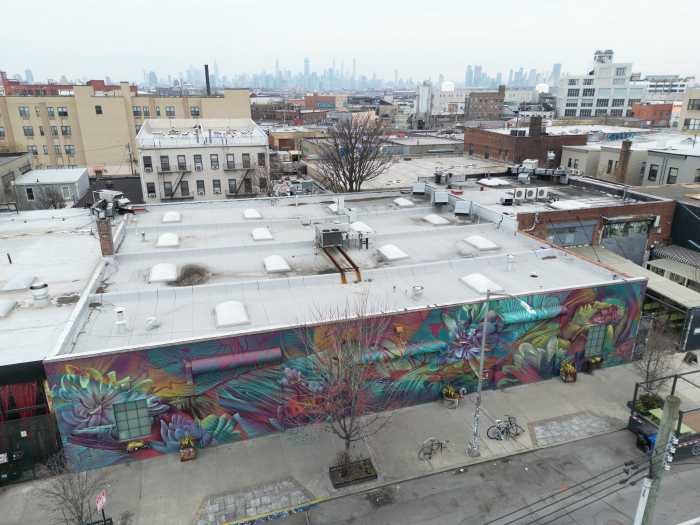
“People photograph themselves, do fashion shoots,” Stanton said. “The building is a challenging canvas. It has lots of roll gates and windows, not a lot of open wall space.”
On Troutman Street, Stanton created “mini murals” that connect including large, blooming magnolias, partially obscured by the figure of Ariadne asleep, and replacing another mural he had done there nearly a decade ago.
“I like to reference history, often things from antiquity, and contemporize them,” Stanton said. “There is this classical figure from Greek mythology, Ariadne, Perseus’ partner for a while. She helped him get out of the minotaur labyrinth.”
Stanton liked the idea of providing a placid pause on a busy street, showing someone “sleeping among the flowers,” which he painted in the spring of 2023 “when magnolias were blooming.”
Bushwick is awash in murals, Stanton said, thanks in part to the Bushwick Collective, led by neighborhood native Joe Ficarola.
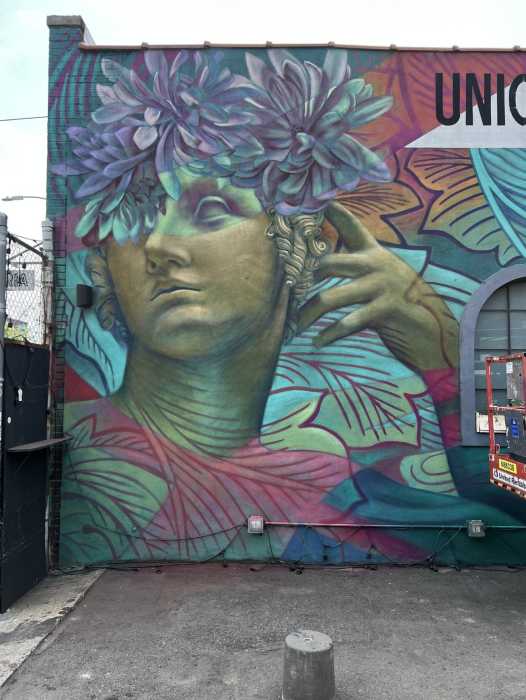
“Bushwick’s the most vibrant mural district in the city. Troutman Street is the center of it,” Stanton said. “People from around the world come there to paint. The mural district is a major tourist attraction for people internationally.”
But Stanton’s art goes well beyond Brooklyn.
He has done more than 60 public murals in 25 cities across 16 countries for The Nature Conservancy, Albright Knox Museum, Times Square Arts, When We All Vote, The World Trade Center, Pangea Seed Foundation, The Explorers Club, The U.S. Embassy to Italy, Wynwood Walls and The Atlantic magazine.
In 2021, he painted a mural showing a mermaid reclining behind the bar at The Sunken Harbor Club on Fulton Street.

At the corner Grant and Mulberry streets in Little Italy, he painted a mural showing a steamship “to represent the Italian American immigration experience,” he said.
And Stanton did a geometric mural near Bowery Street, commissioned by a housing development that “wanted something interesting on that wall.”
“Painting murals in the public space reaches people who might not otherwise interact with art on a daily basis,” Stanton said. “You don’t have to go to a museum or a gallery. It’s an egalitarian, democratic way to have access to art.”
As he sees it, murals have gone mainstream on main street, as small and large cities use art to attract foot traffic in the age of Amazon.
“We’re in the middle of a mural renaissance in the United States and worldwide,” Stanton said. “It’s part of a global street art movement underway for 20 years.”
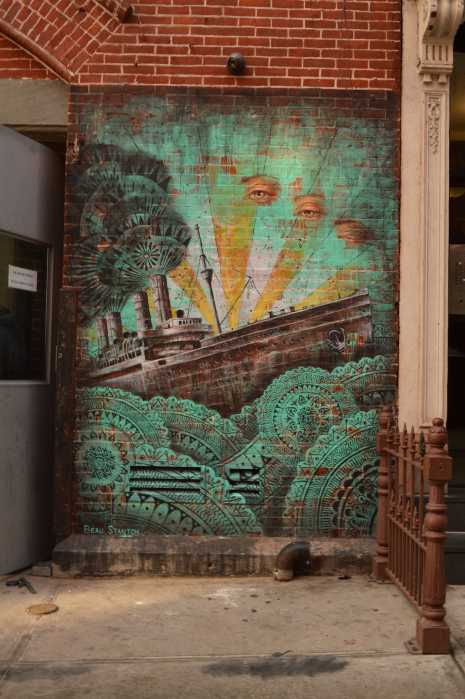
He uses house paint, spray paint and various techniques, depending on the surface and the image’s complexity and has found that “color is a fun and great way to engage with people.”
While the scale of his pieces varies, Stanton favors doing large murals that transform an area, creating not just a new wall, but a new world.
“The size gives them a lot of presence in a city,” he said. “Scale is an important consideration. It gives the work a lot of visual power.”
As Stanton sees it, a business’ building instead of just being a box, can be beautiful.
He said he can usually guarantee a mural for 20 years, although some come down after a business vanishes. One piece he did such as the mural he did for Fort Defiance in Red Hook vanished after the bar shuttered. Over time, Stanton can touch up exterior murals or put coats on them to help prevent fading or to make it easier to remove graffiti, which can blemish the work.
Although a lot of his work is in New York, Stanton grew up in California, earning a bachelor’s degree in fine arts at the Laguna College of Art and Design before going east in 2008.
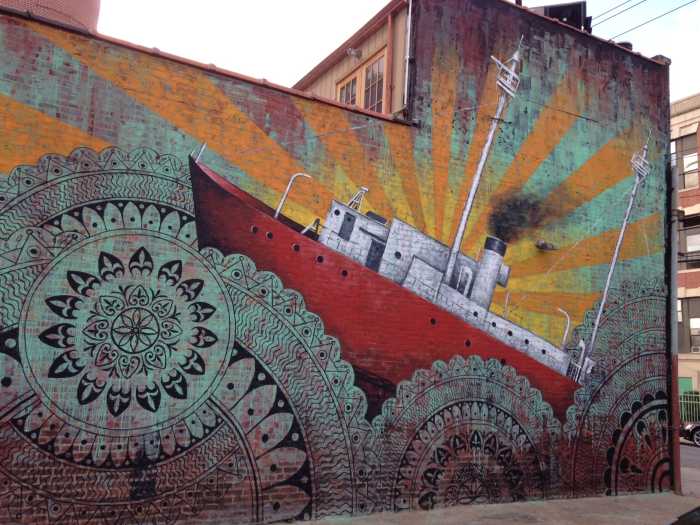
“I wanted to be in New York to pursue a career in art,” he said. “I moved to New York, working as a part time illustrator.”
He worked for artist Ron English for five years, learning to scale up and paint large murals, as well as doing oil paintings, mosaics and stained glass.
“A lot of times, especially early in your career, you do them for free,” Stanton said. “Sometimes murals are paid for by nonprofits, developers, building owners, businesses. It depends who it is and who it’s for.”
A lot of his paintings in Europe, he said, received public funding, “which we don’t really have.” He has done murals all over England, France, Italy, Germany, Portugal, Sweden, Norway and Denmark as well as in the Middle East in Dubai and Jordan.
His red and blue mural near a men’s shelter in Manhattan titled “The Ornamented Mind” showing two heads growing out of a tree is about “opening your mind,” he said.
“That’s how art works,” Stanton explained. “Sometimes, it stimulates questioning. What is this? Everybody brings their own interpretation to the table.”
Stanton said it usually takes a week to ten days to complete murals, although rain can lead to delays and it’s tougher to work in winter.
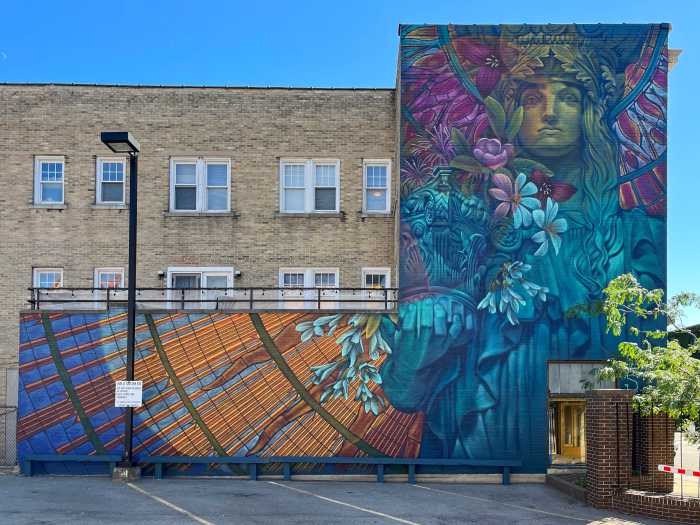
“It depends on how harsh the winter is,” he said, noting he did a piece in Binghamton during a cold October. “The temperature can affect bonding and drying. You need at least 40 degrees.”
Stanton said he can paint “just about anything outdoors” such as brick, concrete, and rendered stucco with different textures. “Anything a building can be made of, I can paint on it,” he said. “That’s why I have different tools, types of paint, applications, sprayers.”
He paints alone or with an assistant, loading some surfaces up with paint so it doesn’t all soak in and using “less brush, more spray” on rough surfaces.
Things sometimes go wrong like the time when a gallon of red paint spilled off a ladder and splashed a mural he was finishing. “Luckily, there was somebody with a hose who could hose off the mural before it dried,” he said.”
There are certain troubles that go with the territory. Every now and then, someone paints graffiti over murals, something Michelangelo didn’t have to worry about.
“It’s part of the territory,” Stanton said. “You fix it or the mural gets painted over. It’s usually kids.”


